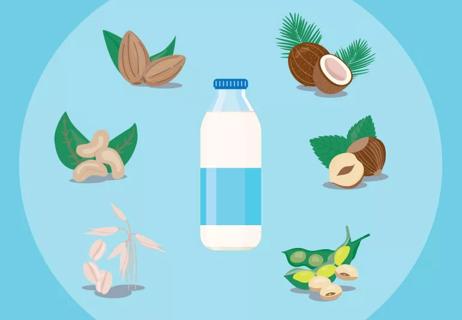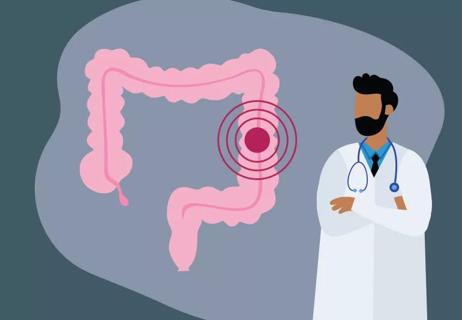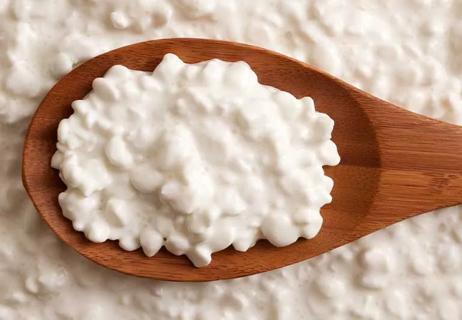Rich in calcium and protein, milk has 18 of 22 essential nutrients that your body needs

If you were around in the 1990s, you might remember the dozens of quirky magazine ads featuring A-list celebrities sporting thick milk mustaches. In the years since, milk substitutes have cropped up and surged in popularity — but whatever happened to good old-fashioned dairy milk?
Advertisement
Cleveland Clinic is a non-profit academic medical center. Advertising on our site helps support our mission. We do not endorse non-Cleveland Clinic products or services. Policy
These days, there’s a long-running debate about whether dairy is truly necessary in our diet. There are undeniable benefits in consuming cow’s milk and milk-based products, but some people also question whether the positives outweigh the negatives.
“Dietary trends have evolved over the years, and many people have moved toward Paleolithic and the ketogenic eating styles,” says registered dietitian Julia Zumpano, RD, LD. “Dairy isn’t a foundational part of either of those diets, which has led to some questions about whether dairy is safe and intended for human consumption.”
Here’s what milk can do for you and what to be on the lookout for.
Milk has 18 of 22 essential nutrients, making it a nutritional rock star and a simple and efficient way to get a long list of vitamins and minerals. It’s especially rich in calcium and protein, which are critical elements of a healthy diet.
“Calcium and protein are the main sources of nutrition that we get from milk and other dairy products,” Zumpano says, “but milk also includes other vitamins and nutrients that all offer different benefits to the body.”
Dairy milk is a good source of magnesium and vitamin A, which the U.S. Office of Disease Prevention and Health Promotion calls “shortfall nutrients” — nutrients that most Americans don’t get enough of. (Calcium is a shortfall nutrient, too.) It’s also a good source of:
Advertisement
Plus, some milk is fortified with vitamin D, which helps your body better absorb calcium.
So, what do the vitamin and nutrients in milk actually do for you?
“All of the structural components of our body, including muscles, tissues and bones, are maintained through our consumption of healthy vitamins, minerals, micronutrients and macronutrients,” Zumpano says. “They play a role in our overall health from head to toe.”
Here are some of the benefits of drinking dairy milk:
You may associate milk with strong bones (those marketing campaigns of old really made an impact!), and for good reason. Milk is a great source of calcium, an essential mineral that your body can’t make for itself and must get from the food you eat.
“Calcium is necessary for strong bones and teeth, and it helps your body maintain muscle movement, blood clotting and nerve signaling,” Zumpano explains. Strong bones can help fend off osteoporosis (loss of bone mass) and lower your risk of fractures.
According to the U.S. Department of Agriculture (USDA), here’s how much calcium you’ll find in a cup of cow’s milk, depending on the type:
Most adults need about 1,000 to 1,200 mg of calcium per day, so a cup of dairy milk can go a long way toward getting you there.
“But it’s not just calcium alone that builds strong bones,” Zumpano notes. “We know that calcium does that, but more and more, we’re finding that other nutrients are involved, too, including vitamin K2 and vitamin D. And milk is a good source of both of those.”
Milk is a good source of high-quality protein, with about 8 grams of protein per cup. “It can be especially beneficial if you struggle to get enough protein,” Zumpano says.
Your body needs protein in order to build and repair cells in your muscles, bones and skin. It’s also important for oxygenating your red blood cells, regulating your hormones, speeding up exercise recovery and more.
Even better, milk is considered a complete protein, which means that it contains all nine essential amino acids that your body can’t produce on its own.
Some studies show that regularly drinking dairy can help manage diabetes (though, the greatest benefit comes from low-fat dairy, specifically yogurt).
“Getting your carbs from low-fat milk or yogurt can be beneficial because the protein can slow down the rate of glucose (the sugar in your blood) when compared to a carb with little or no protein,” Zumpano explains. “Milk is certainly more beneficial than some other carbohydrate sources, like refined breads, flour, rice and refined grains.”
Advertisement
Tiny humans have big nutritional needs, and milk is full of so many important nutrients that it’s considered an important part of a child’s diet.
“We encourage milk drinking for young, growing children as they’re transitioning away from breast milk or formula,” Zumpano says. “It’s a foundational beverage for kids because it meets so many of their nutrient needs.”
Milk is inherently calorie-dense and high in natural sugar, so depending on the type of milk you choose and how much of it you drink, you may be consuming too much of both.
Not sure of the difference between 1% and 2% milk? Those percentages indicate how much milkfat — the fatty part of the milk — it contains. The higher the percentage, the more grams of fat that type of milk contains.
These USDA stats break down the four common types of dairy milk and how much fat and calories you’ll find in one cup (8 ounces):
| Type | % Milkfat | Calories | Total Fat |
|---|---|---|---|
| Skim milk | 0% (fat-free) | 83 calories | 0 grams |
| Low-fat milk | 1% | 103 calories | 2.5 grams |
| Reduced-fat milk | 2% | 124 calories | 5 grams |
| Whole milk | 3.25% | 148 calories | 8 grams |
| Type | |||
| Skim milk | |||
| % Milkfat | |||
| 0% (fat-free) | |||
| Calories | |||
| 83 calories | |||
| Total Fat | |||
| 0 grams | |||
| Low-fat milk | |||
| % Milkfat | |||
| 1% | |||
| Calories | |||
| 103 calories | |||
| Total Fat | |||
| 2.5 grams | |||
| Reduced-fat milk | |||
| % Milkfat | |||
| 2% | |||
| Calories | |||
| 124 calories | |||
| Total Fat | |||
| 5 grams | |||
| Whole milk | |||
| % Milkfat | |||
| 3.25% | |||
| Calories | |||
| 148 calories | |||
| Total Fat | |||
| 8 grams |
Importantly, they all have the same amounts of other nutrients, so if you choose a lower-fat variety, you’re not missing out on any of the good stuff. It’s worth it to make the switch, Zumpano says. “We typically suggest consuming lower-fat versions of dairy, including milk, yogurt and cheese.”
The exception is children under age 2. Young children need the fat found in whole milk for brain growth and development.
Advertisement
“After age 2, you can choose to move to a lower-fat milk or continue with whole milk based on your child’s growth and development,” Zumpano adds.
Yep. Organic milk comes from cows that aren’t treated with antibiotics or growth hormones, and the cows that produce it must spend at least 30% of their time at pasture.
“Organic milk avoids the hormones and other unnecessary additives to dairy that we’re trying to avoid,” Zumpano says. “You can also find milk that isn’t organic but says on the label that it is sourced from cows that were not provided growth hormones.”
And here’s a nutritional bonus: Grass-fed cows are thought to make milk that is higher in omega-3 fatty acids, which support heart, brain and eye health, along with the health of your digestive and immune systems.
Above all, Zumpano says it’s important to pay attention to how your body is reacting to the dairy you consume, including the types and the amounts.
“Keep in mind how much you’re consuming,” she continues. “A lot of times, if you have symptoms or side effects, you’ll see that they become more severe with greater consumption. So, try to keep your consumption low and find out what your personal threshold is.”
Here’s a look at some of the potential cons and reasons to exercise caution when it comes to dairy:
Advertisement
Milk consumption has been associated with an increased risk of some cancers, like prostate and endometrial, possibly from the growth hormones.
“When we look at cancer risk, we’re really looking at the fat in dairy, which contains estrogenic hormones,” Zumpano explains. These hormones have been associated with an increased risk of prostate and endometrial cancer but with a lower risk of colorectal cancer.
On the other hand, prostate, endometrial and colorectal cancer risk may be increased by the use of synthetic growth hormones often given to cows.
“Cows that are given these hormones have an increased risk for infection, so they’re more commonly given antibiotics,” Zumpano notes. “This poses concerns about promoting antibiotic resistance, which has not yet been concluded in humans.”
She says the best way to avoid these risks is to buy organically raised dairy products, as they come from cows that aren’t treated with hormones and antibiotics. If that’s not an option for you, whether due to cost or availability, it’s best to cut back on your overall consumption of milk and dairy products.
Whole milk and 2% milk, in particular, are high in saturated fat. Consuming a lot of saturated fat leads to more plaque (cholesterol and fat) building up in the lining of your arteries, which makes it harder for blood to flow through your body. This increases your risk of heart disease.
“We know that saturated fat can increase your level of LDL, or ‘bad cholesterol,’” Zumpano says, “so if you’re consuming these kinds of milk in large amounts, it really adds up.”
Cheese is another contributor to increased LDL, so it’s important to consider not just how much milk you’re drinking, but also how much dairy you’re consuming in general — including whole-milk cheeses, butter and cream. They’re all high in saturated fat.
It’s common to hear beauty buffs swear cutting dairy out of their diets has cleared up their acne. But what’s the real connection?
“We don’t yet know exactly how dairy can contribute to acne,” Zumpano states, “but many people who deal with chronic acne find that when they reduce their dairy intake, their skin improves.”
Researchers still don’t yet understand why that is. But it’s clear that there’s some real association between dairy products and acne.
“If you struggle with acne, try cutting dairy from your diet for a couple of weeks to see if your skin clears up,” Zumpano advises. “That will help you determine whether you’re sensitive to it.”
Does milk drinking lead to hip fractures?
This one’s a little bit confusing. Milk is associated with strong bones, which is associated with a lower risk of bone fracture — but some research has shown that drinking high quantities of milk may be associated with an increased risk of hip fractures later in life.
“A review of the research found that consuming more than 200 grams a day of milk of dairy alluded to some increased risk of hip fracture. That’s 7 oz. of milk, which is less than 1 cup,” Zumpano notes. “But at this point, there isn’t evidence to show an association between milk consumption and the risk of hip fracture.”
If you’re concerned about fractures, try reducing your dairy intake to 1 cup or less per day.
For some people, drinking milk and eating dairy products can cause gastrointestinal issues like gas, bloating and indigestion. Those symptoms are much worse if you’re lactose intolerant.
“People who are lactose intolerant lack the enzyme lactase to break down that lactose that’s found in milk,” Zumpano explains. “Your body can’t digest milk very well because it can’t break down lactose or milk sugar.” Symptoms include:
Some estimates say up to 70% of the world’s population may be lactose intolerant. But do you miss out on anything critical by not being able to drink milk or eat dairy products?
“If you don’t tolerate dairy, it’s probably best to just cut it out,” Zumpano says. “You can gain the vitamins and minerals found in dairy from other foods, so as long as you replace dairy with other sources, you won’t be missing a big chunk of nutrition.”
You can also take a lactase supplement before you eat dairy, which can help your body break it down (but only if you remember to take it!). You can also switch to lactose-free milk.
Lactose-free milk options give you all the taste and vibe of standard dairy products. They’re even made with real milk — but if you can’t tolerate lactose, they won’t give you all the tummy troubles of regular dairy milk.
“In lactose-free milk, the lactase enzyme has been added to help your body digest it,” Zumpano explains.
Plus, if you’ve set foot in a coffee shop over the last decade, you’re probably also familiar with a bevy of fairy-free milk alternatives, each of which has its own nutritional profile. Options include:
Unsweetened versions of milk alternatives are lactose-free and don’t include all the calories, hormones or, in most cases, the saturated fat, Zumpano says, so they’re worth considering. “But they don’t typically have the same amount of protein as dairy milk, so make sure you’re getting enough protein elsewhere in your diet.”
One more thing: Although you can’t necessarily chug a cold glass of it (and please don’t dip your cookies in it), yogurt can be a good dietary swap, especially if you choose a version that’s plain and low in fat or and even lactose-free. It’s full of probiotics and healthy bacteria that can feed your gut.
“Yogurt can give you the nutrients and vitamins you’re looking for from dairy while being lower in fat and still providing protein,” Zumpano says. “It’s a great option for people who are lactose intolerant but still want to include dairy in their diet.”
Learn more about our editorial process.
Advertisement

No single food will increase your milk, but an overall healthy diet will help

Here’s what to consider when you make a trip down the dairy aisle

The short answer from a sports nutrition expert

But there's one kind of milk you should always be drinking

Milk alternatives aren't good for your child's growth + development

CHANGE ADDED NOW Lorem ipsum dolor sit amet. Non voluptatem quibusdam qui nobis laborum in animi autem est veritatis temporibus quo impedit eius. Quo possimus quaerat sit odio omnis est commodi consequatur vel assumenda itaque. I ADDED THIS JUST NOW CHANGE

Be sure to check the labels of common foods like canned tuna, bread, hot dogs and chocolate

This dairy product can help you lose weight, manage blood sugar and strengthen bones

Type 2 diabetes isn’t inevitable with these dietary changes

Applying a hot or cold compress can help with pain